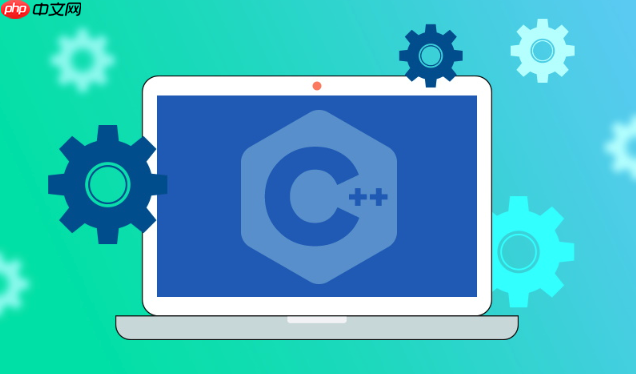c++11 引入范围 for 循环 ,语法为 for (declaration : expression),可简洁遍历数组或容器;支持普通数组、vector、String、map 等具有 begin()/end()的 对象 ,通过引用可修改元素,用const 引用避免拷贝;遍历 map 时元素为 p ai r 类型,推荐使用 const auto& 自动推导。

在 C ++11 及以后的标准中,引入了范围 for 循环(range-based for loop),它提供了一种简洁、安全的方式来遍历容器或数组中的每一个元素。相比传统的 for 循环,范围 for 循环语法更清晰,不易出错。
基本语法
范围 for 循环的基本语法如下:
for (declaration : expression) {
statement;
}
其中:
- declaration:声明一个变量,用来接收当前遍历的元素。通常使用引用或 const 引用以避免拷贝。
- expression:表示要遍历的序列,比如数组、vector、string、map 等支持 begin()和 end()的容器。
遍历普通数组
对 C 风格数组也可以使用范围 for 循环:
立即学习“C++ 免费学习笔记(深入)”;
int arr[] = {1, 2, 3, 4, 5};
for (int x : arr) {
std::cout << x << ” “;
}
// 输出: 1 2 3 4 5
如果想修改数组元素,需要使用引用:
for (int& x : arr) {
x *= 2; // 修改原数组
}
遍历标准容器(如 vector、string)
对 STL 容器,用法同样简单:
std::vector<int> vec = {10, 20, 30};
for (const int& value : vec) {
std::cout << value << ” “;
}
// 输出: 10 20 30
使用 const 引用可以避免不必要的拷贝,同时防止意外修改。
遍历 map 或 unordered_map
map 的每个元素是 键值对(std::pair),所以要注意声明类型:
std::map<std::string, int> ages = {{“Alice”, 25}, {“Bob”, 30}};
for (const auto& pair : ages) {
std::cout << pair.first << “: ” << pair.second << “n”;
}
使用 auto& 或 const auto& 可自动推导 pair 类型,减少书写负担。
基本上就这些。只要对象有 begin() 和 end() 成员函数,或者可以用 ADL 找到对应的全局函数,就能用于范围 for 循环。常见类型包括数组、string、vector、list、set、map 等。



